5 Best Centerpin Floats For 2024
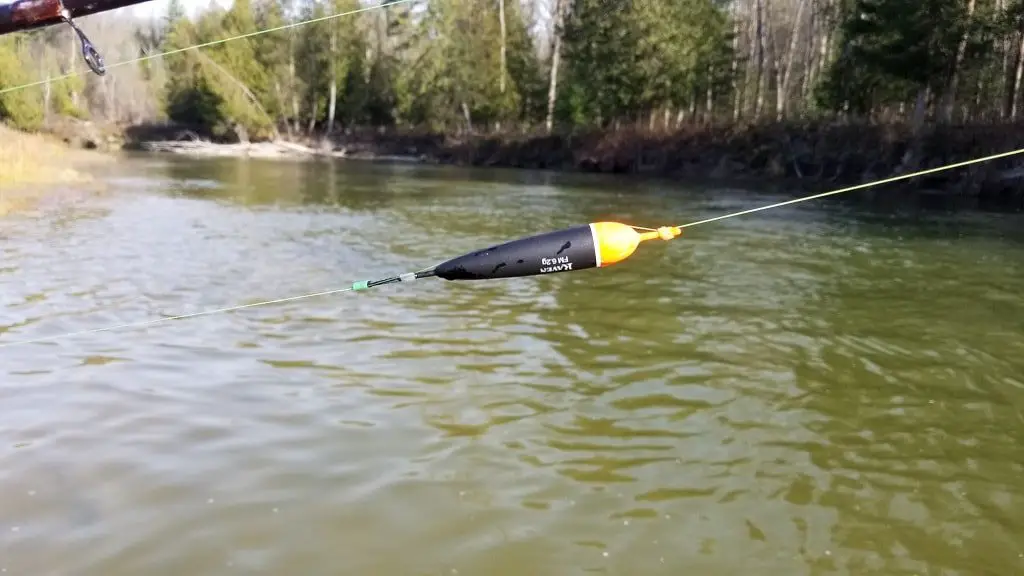
I am a float fishing specialist. I’ve been guiding for 22 years and float fishing for 37 years. There are a number of different factors that will determine the best Centerpin floats, and I can tell you from experience that some floats are much better than others.
When choosing the best Centerpin float, you want one that is easy to see, one that helps you gauge your depth, helps you control your speed, and is sensitive enough to detect subtle bites from a steelhead, salmon, or trout.
The size, speed, and depth of the river will determine what the best float is for you. The color and shape of your float are also important and I will explain all this below.
If you read to the bottom, I will also explain how to make your float do more than just detect a bite, and how to make them more effective so you catch more fish.
Out Quick Pick For The Best Floats For Centerpin Fishing
- Best Overall – Raven FM Premium Balsa Float – 6-gram to 12-gram
- Best Float For Deeper And Fast Rivers – Raven FX Raven Premium Balsa Float
- Best Stealth Float – Drennan Crystal Loafer Float
Best Float Colors
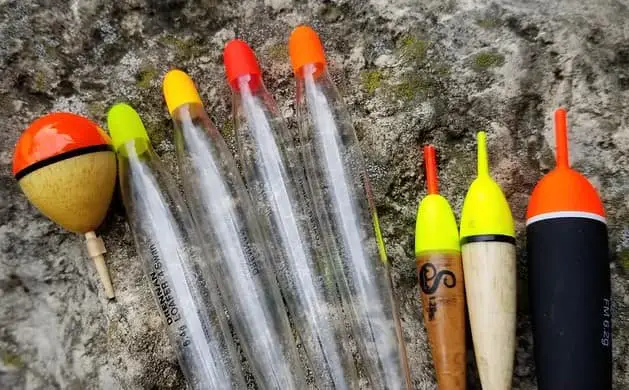
Having the right colored Centerpin float will help you see the float better.
Bright orange shows up under both sunny and cloudy conditions and is what I use 99% of the time.
In any situation when there is a lot of glare on the water’s surface, orange floats are the easiest to see.
Some anglers believe that chartreuse is the best float color on cloudy days and orange is only good on sunny days, but even cloudy days can have a lot of glare on the surface of the water which is why I use orange floats all the time.
Best Float Sizes
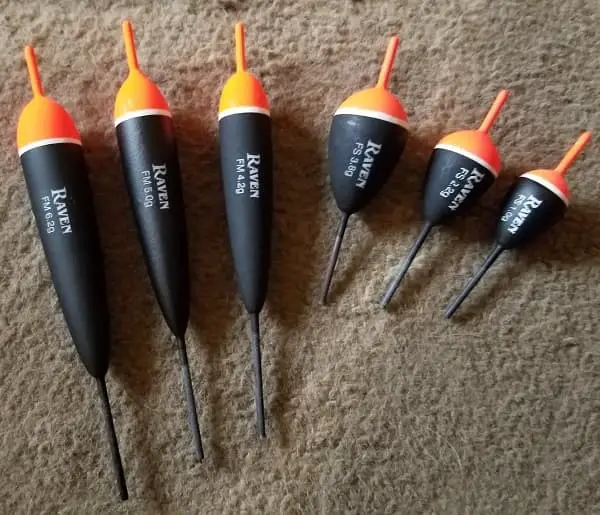
I use different-sized Centerpin floats for different river speeds and depths.
When I say the size, I actually mean the weight. Floats are usually measured in grams, and bigger floats hold more weight and can be easier to see.
I also use different-sized floats for clear water where the fish may spook easily or where the water is slow and shallow and doesn’t require a lot of weight.
I also use different sizes or shapes to help my clients see the float better and that includes times when there is a lot of glare on the water.
Older anglers or anglers who don’t have great vision may benefit from a much larger float that they can see from a longer distance.
The Best Shaped Floats
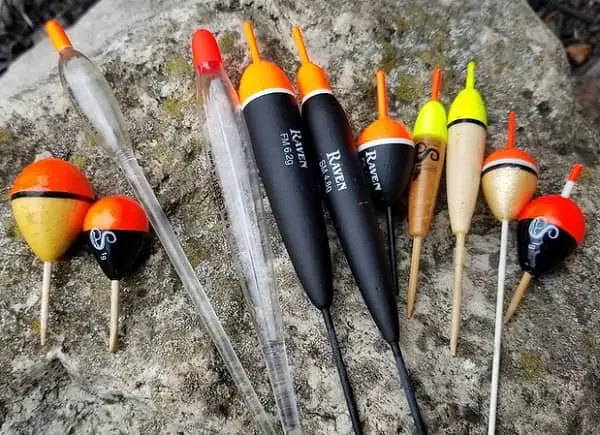
There are a lot of different brands of with different float shapes, and I have tried dozens to see which ones work the best.
I believe the shape of your float is very important because if you are a very good float angler who catches a lot of fish, then you know that your float does a lot more than just suspends your bait or let you know when a fish is biting.
One of the key things to float fishing is a method called trotting or checking your float. If you want to catch more fish then you need to learn how to trot well. Trotting is when you lightly hold your float back to slow the bait down and to present the bait ahead of the float.
The Best All-Around Centerpin Float
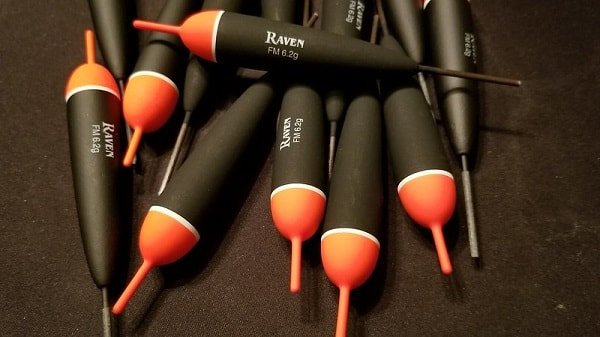
The Raven FM Float is the best all-around Centerpin float for most mid-sized trout and steelhead rivers.
Even though FM stands for Fast current – Medium depth, this float will work in slow and deep water, and I know this for a fact because my clients catch a lot of steelhead in very slow water at depths of 10 feet deep with this float.
For smaller rivers of 20 to 30 feet with most or all pools under 6 feet deep, I would use the 4.2-gram size.
For bigger rivers of 25 to 50 feet wide and with average pool depths between 3 and 8 feet, I would recommend a 5.0 or 6.2-gram size float.
For bigger rivers of 40 to 100 feet wide, I would suggest a 6.2-gram float or switch to the Raven FD 8-gram float.
I would also say that if you are an older angler with limited vision or you are fishing rivers with very long drifts over 100 feet at times, then I would suggest using the 6.2-gram floats for all rivers between 20 and 100 feet wide.
For rivers that have depths up to 15 feet, I would suggest the Raven FD Model in the 8.0-gram or 11-gram float.
To attach these floats to the line I use the 1/16th Raven Silicone Float Cap Tubing or I will use the Drennan float caps, I use the black, brown, and green sizes for a snug fit.
Best Clear Water Floats
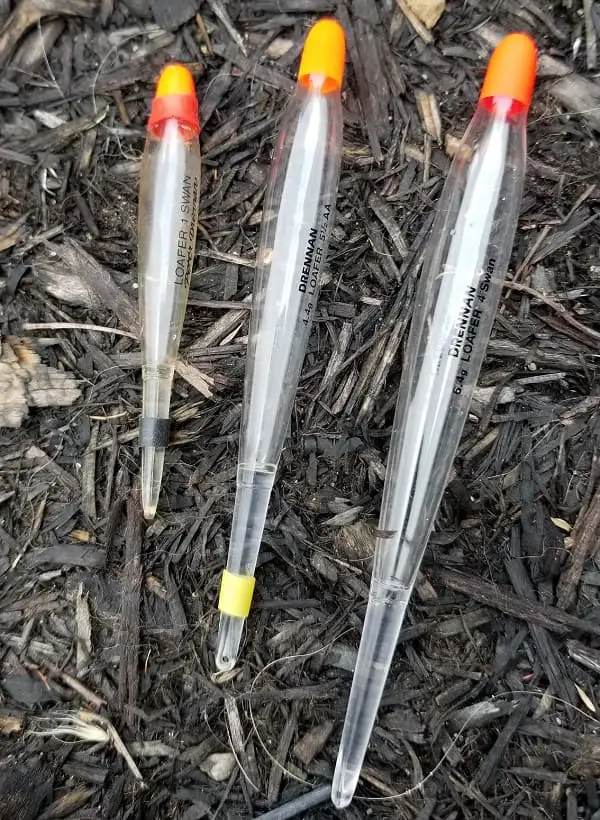
These Drennan Loafer floats are my preferred float for clear-water steelhead and trout fishing.
I’ll use a three-inch float for low-clear trout water and a 6.4-gram float for deeper water.
The float on the far right is a 6-gram float that is 5 inches long, and the picture on the far left is a 2-gram float that is about 3 inches long.
These floats require the special Drennan Float Caps due to the sizes of the top and bottom of the float.
Best Deep Water Floats For Steelhead
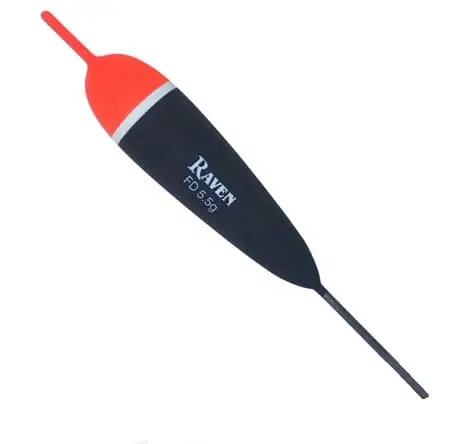
For deep water, you need an extra long leader and often extra weight, which means a bigger float is required.
One of my favorite floats for rivers that are 10 to 16 feet when I’m using a rod that is 12 to 14 feet long is the Raven FD 8-gram or 11-gram float.
To help you cast easier when you want a leader of 13 feet or more and especially if your rod is under 12 feet long, it’s often best to use a slip float like the Drennan Crystal Piker Float or the Raven FX float in the 11 to 15-gram size. For the Raven FX floats, I also use the Drennan float caps.
This is the only time I will use a slip float because it does not have a pointed top to help you control your speed and to help locate the bottom with your bait.
For slip floats, you will need good rubber float stops. Float stops go on the line to stop the float at the maximum designated depth. The float stops should cast through the guides easily.
Best Economy Floats For Steelhead
If you are looking to save some cash, these are floats that I have used and would use again.
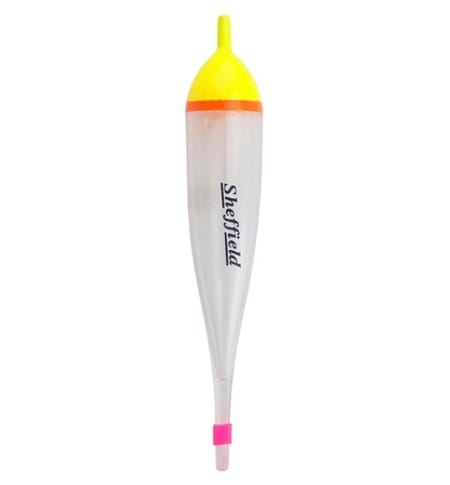
The Sheffield Floats are constructed of crystal clear plastic with your choice of Flo. Chartreuse, Flo. Orange or Flo. Pink hi-vis tops.
The clear plastic material makes them nearly invisible in the water and at the same time very durable.
These floats have a slot in the bottom section to put the line through and they come with silicone tubing to hold the line in place on the top and bottom of the float.
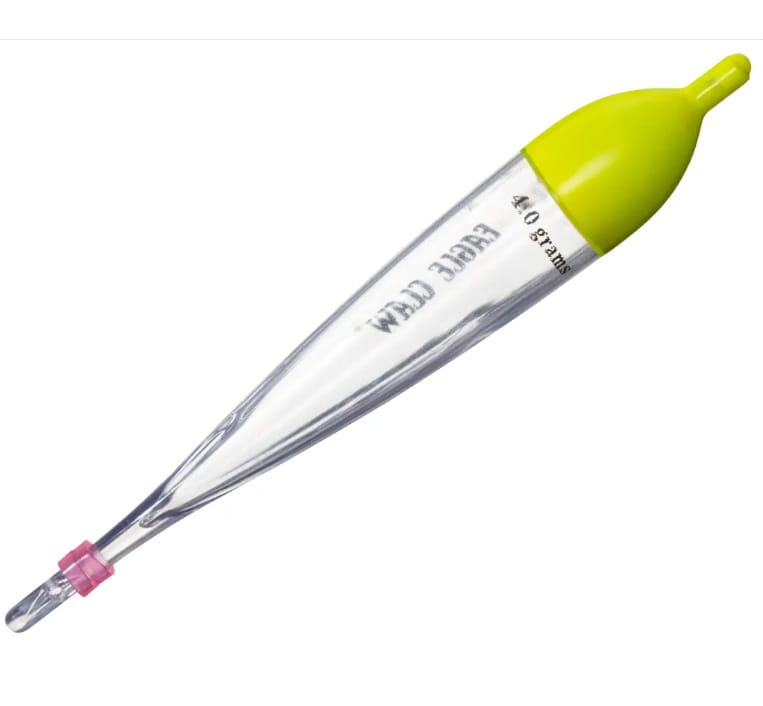
The Eagle Claw Clear Steelhead Floats are constructed of clear plastic making them nearly invisible in the water. The tops are painted with hi-vis paints for excellent visibility above water.
The Eagle Claw Clear Steelhead Floats feature a hole through the bottom stem that allows you to thread your line through for extra secure placement on the line.
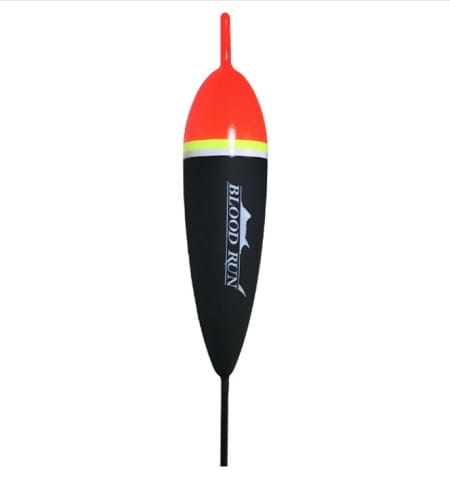
Bload Run Floats
Used by many anglers around the great lakes fro steelhead, trout, and salmon.
These are durable and come in a variety of sizes for all types of water.
Of the three discount floats, these are the more expensive ones, but they also get the best ratings.
How To Make Your Floats More Effective
First, you need to get a float that is actually made for river fishing. It should have a proper point and not one that is too long or too short.
A float with a pointy top will allow you to see the angle of the float better than a flat or rounded top like the two seen on the left. A pointed top will help you control your speed and your leader angle which is very important for more fish. I discuss this in more detail on my page Controlling Your Speed For More Fish When Float Fishing.
It’s also very important to find the bottom with your bait so you know that your bait is deep enough and in the strike zone. It’s also important that your bait is not dragging along the bottom.
The angle of the float helps you determine if your bait is suspended or dragging the bottom or out in front of the float too far. If that pointed top keeps tilting and pointing down the river, you are likely dragging your bait, so the pointy top makes it easier to read what your float is telling you.
I discuss my methods for setting your float, finding the bottom, and being in the strike zone more often on my page How To Know How Deep To Set Your Float – 2 Easy Ways.
Floats with larger tops that are more ball-shaped with a point may also be best for anglers who do not have great vision.
The smaller top floats can be very hard to see at times and are usually not recommended. However, some anglers like them because they sit lower in the water and are less likely to get pushed around by heavy winds. Personally, I don’t believe that’s a common issue, which is why I don’t ever recommend flat-top floats or low-profile floats.
Float Angles For More Fishing
Having the float angled properly in the water when fishing will greatly increase how many fish you will catch, so it’s important to know this, and some floats help you do this better.
There are certain angles that are bad and will mean fewer fish, and certain angles that are good and will help you catch more fish. Check out the How To Centerpin Fish page for details on how to fish your float properly.
How To Weight A Float Properly
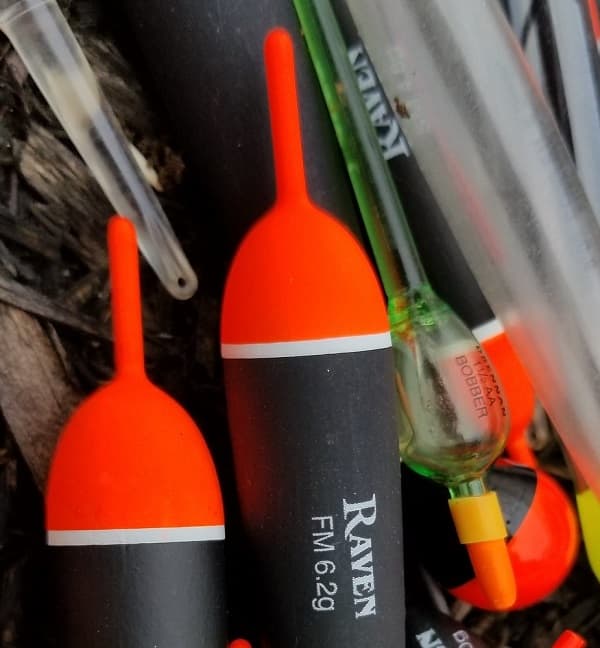
Your float should be weighted properly or balanced properly in order to get the best results. This means the weight on your leader.
I weight my float just enough to sink it to the bottom of the colored section or just below the colored section for best results.
A float that is not weighted enough may fall over and lie flat on the surface, which is not a good thing.
Adding enough weight to the leader will also allow you to cast further and get the bait into the strike zone faster, but adding too much weight will sink the float or make it sit too deep to be seen easily.
Knowing how much weight is not that difficult. To know how much weight is right for the float that you use is as simple as adding a few split shots to your leader and then putting your float into the water to see how much it sinks. Then, keep adding one weight at a time until it’s up to the colored section.
Then remember how many and what size weights you used for that size of the float for next time.
I discuss my method for properly weighting your floats on my page Floats and Weights Setup For River Fishing.
The above article only describes how to determine how much weight you should have on your line. To see how I set up my leader and configure my weights, go to my Float Fishing Leader Set-up page.
Clear Floats or Solid Floats- Which Is Best?
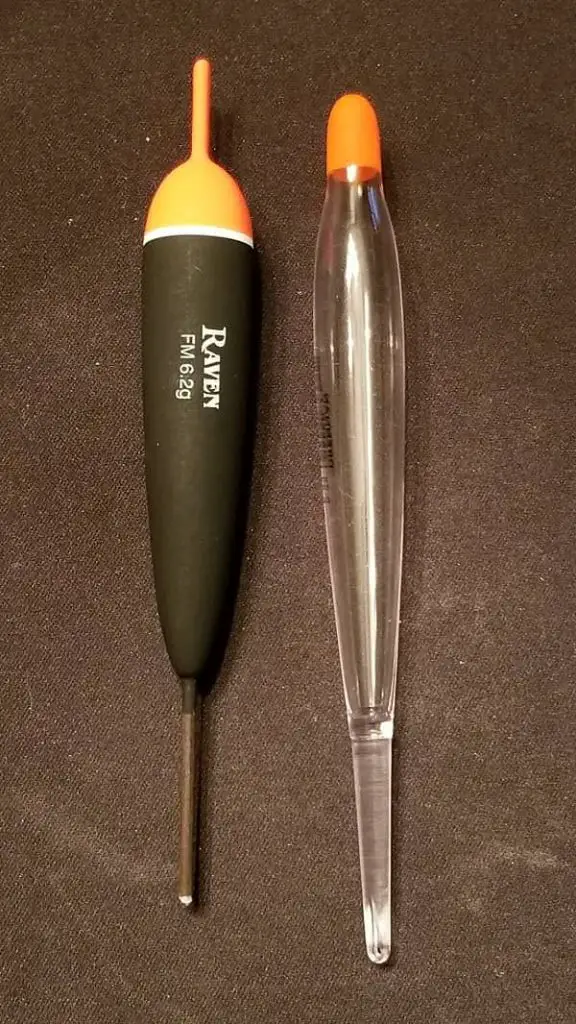
There are advantages and disadvantages to clear and solid floats.
Solid floats are great for many situations, and I don’t believe the fish see them or get spooked by them in faster and deeper waters, so they don’t affect how many fish you will catch.
I use mostly solid floats for almost all river situations over 3 feet deep except when the water is very clear and low, or slow, or when the fish are easily spooked.
I will only switch to a clear float and change to an appropriate size when the water is so clear that the fish can easily see the float and might be spooked by it.
Clear floats like the Drennan float on the right may be harder for some anglers to see, but there are some clear but larger topped ones that can be seen by the angler better, but that also means they may be seen by the fish too.
These two floats in the picture are my go-to floats for almost every river that I fish all around the great lakes region. The Raven FM float is perfect for any river of four to twelve feet deep, and the Drennan Loafer float is great when I need stealth.
GUIDE TIP: If the water is clear enough for the fish to see your float, it’s probably clear enough for the fish to see your leader and split shots, so make sure you use the right leader size.
Float Caps And How To Attach The Float
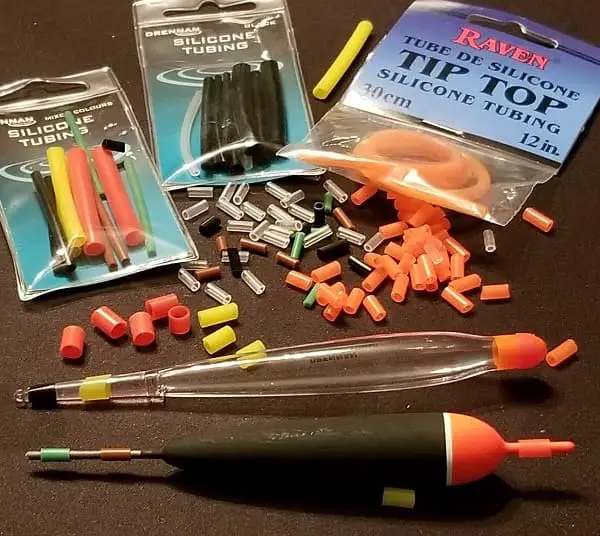
Float caps are what we use to attach the floats to the line.
A rubber or plastic float cap that fits well will make it easier for you to slide the float up and down the line but snug enough that it won’t move unwanted when setting the hook.
It’s important to adjust your float to get close to the bottom and into the fish’s strike zone so once you find that zone, you don’t want your float moving every time you set the hook, so snug is better than loose.
You can buy pre-cut float caps or ones that come in lengths and then you can cut them down to about 3/8 of an inch. Some float caps come in multiple sizes because some floats are fatter at the top and narrower at the bottom. Make sure the caps that you use are snug fitting.
Simply put the caps on the line first and then put the caps onto the bottom and top of your float.
GUIDE TIP: You need at least two caps on a float, but I use 3 to 4 caps as seen on the floats in the picture because if one breaks, I have a back-up, and I won’t need to cut the line and then add another float cap and then retie. The 3rd cap also makes the float more secure so it doesn’t move unwanted.
Tight Lines
Graham,

Hi Graham, I am considering fishing the Saugeen for steelhead this weekend and I was wondering what weight you would recommend to use at Denny’s dam and also if you think there will be enough fish still in the river to make it worth it?
Hi Alex,
For a bigger river like the lower Saugeen, I would recommend a 6gm float,
About how many fish in there, I will not be providing local information on rivers, or access spots, or providing river reports on this website in the comments section. Giving river reports like that on a public website makes a lot of guys that fish that river angry and I would like to avoid that kind of problem. There are facebook forums that you could connect with other anglers that might be able to give you some up-to-date intel on local rivers.
You could also hire one of my guides for a guide trip. We are more likely to help you both learn how to catch fish and learn where and when to fish if you are one of our regular clients.
Extremely helpful article Graham,
I would like to share a few of my observations/learnings regarding float-shapes, water current and surface tensions.
A float whose shoulder(the widest part of the float-body) is under the water will track better (maintain the seam)and move the least with force exerted on the top of the float(mending,trotting,wind) . The taper from the shoulder of the float to the lip of the float makes it hold the seam .(eg loafer /avon ).The float will tilt rather than move laterally(relatively to a bigwater/ raven fast type floats)
In case of floats where the widest part is on the surface of the water don’t have this resistance thus causing more movement .
Regarding glare on the water , I have seen anglers in the UK use black tops .
I would love to know your thoughts on these observations.
Hey Durvesh, You are correct, and that is a great observation, and one most anglers would not see or consider, and it is is a good reason to use the Loafer and Avon floats for some anglers, however, many anglers can not see them well with just that tiny portion sticking out of the water especially at long distance. Being able to see the float so you can control the angles and the speed and then see the bite is better than having it track well in my opinion.
Some anglers also prefer the Acorn style float (Raven FS) because they are fatter and will have more body widge of the float under the water if weighted properly.
Something to consider if you are fishing small to mid-sized rivers is the Raven SM 4.8gm.. look at the shape, lots of body under the water with more tip than a loafer float. Unfortunately, the largest size is the 4.8gm but I have used it and it works.
You could also weight your Raven FM floats more and sink them deeper to get a similar result by having more of the body in the water with only the tip and a bit of shoulder out of the water, in fact, you could do probably do that with most floats. You just need to fish the float that works for you.
I have never tried or seen guys use blacktop floats around the great lakes. Even in glare, I find the orange is easy enough to see. If you try it let me know how it works.
Thanks.
Graham
Thanks for the reply Graham, truly appreciate it!
2020 was my first season float fishing so wanted to check if my observations were true.
I started observing the benefit of the loafer shape when I used raven sm 4.8 and moved to drenan loafer as there were no other stemmed floats available in that shape and size (above 5gm).
After doing some search I have come across floats from CentrepinAngling labeled as “NO NAME GRAPHITE SLIDER” which have the shape of a loafer float but have a thicker/bigger top . They hold the seams quite well due to their profound lip/shoulder, when a little overshot. Unfortunately the build quality is poor and they wont stand the abuse like Drenan .
I will surely paint one of the float tops black and test it out under sunny conditions.
Hi Graham, I want to try the notty around angus soon what g float would u recommend cause I’ve never fished it before and I want to try get some fish.
I use the Raven FM 6.2 or sometimes a 5gram float, but if you have good eyes most river floats in the 4 gram to 8 gram will be fine too.
Very good information especially for a beginner center pin angler.
I fish in the Erie Pa are Elk, Walnut, Crooked Creeks and the water is normally 2 to 4 feet and normally use a small foam bell shaped float. What would you recommend for this area? Normally floating egg sacs and sometimes flies.
Thank You
BC
Hi Bill, I have fished those creeks before but not for about 8 years, the last time I was there they weren’t fishing well so we headed to Ohio to fish the Conneaut and ASh which were much better. For those shallow Erie tribs, I would drop to a Drennan Loafer clear float and use my leader setup and make sure you control your speed and angles and get the right depths. I discuss that on my my Centerpin page . The baits I would suggest will depend on the conditions when you arrive at the river. In clearwater, I use different baits, dirty water other baits. See my page on the best baits for steelhead which I have recently updated with new baits.
Good Luck and maybe if you do get up here I’ll have one of my top guides give you a lesson. 😉
Hi Graham what is the best float for fishing the nottawasga near angus I’ve caught a couple fish this year but I think that my float is a little to big an spoking fish just wanted an experts advice thanks
For that river, I mostly use 6.2gm Raven FM Floats but, I use that size to help my older clients see them on the long drifts. I and some of my biddies and guides prefer the 4.2 or 5gm floats.
For Saugeen 6gram is not enough , I would say 11 or 15 g beacause it’s long casting
On the lower Saugeen river where it might be 300 feet across, a bigger float is probably a good idea to help get your bait out to the fish. However, when I guide above Denny’s dam to Walkerton, I mostly use a 6-gram float and my clients and I never have any issues covering the water with it.
what size micro swivels. raven.
I mostly use XX-small and the XXX-small but the 4xs also worked for steelhead.
Graham